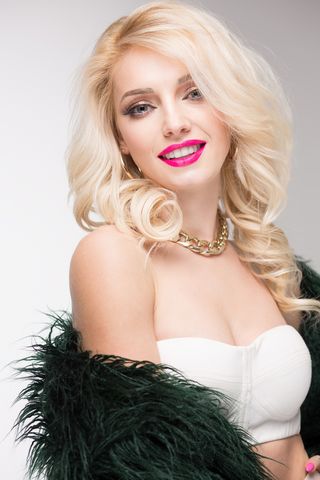Mating
Do Men Really Prefer Blondes?
Research explores the link between hair color and courtship.
Posted February 16, 2020 Reviewed by Lybi Ma
A blonde, a brunette, and a redhead walk into a bar. This is not the beginning of a joke, but a research experiment. Several, actually, as scholars and behavioral experts have attempted over the years to explore the connection between hair color and courtship behavior. In a nightclub setting, for example, assuming generally comparable descriptions other than hair color, which woman will be approached first?
Color Matters
For many women on the dating scene, the answer to this question matters. If you were not blessed with (or no longer have) your hair color of choice, options abound. From the salon to the shelves of the beauty aisle at your local store, you can have just about any hair color you want. With all of the choices, what should you choose?
True, many women are perfectly happy to sport the locks they have—grey streaks and all. Many of these women, of all backgrounds and nationalities, are stunningly gorgeous au natural. No need to cite a research study for the reality that many women are beautiful inside and out regardless of hair color.
But for women who decide to enhance, or even drastically change their natural hues, colors matter. Research has explored this and come up with some interesting results.

Hair Color and Approachability
Viren Swami and Seishin Barrett (2011) examined the impact of hair color and male approach behavior.[i] In two studies, they investigated the link between women’s hair color, ratings of personality and physical beauty, and approach behavior by men in London. In one study, they had a woman with her hair colored red, brown, or blonde sit in several different London nightclubs, on Thursdays, Fridays, and Saturdays over a five-week period. She simply sat at the bar, looking out to the main dance floor. She was specifically instructed not to flirt, or even to make eye contact with a man. She wore the same makeup and clothes in every setting: dark jeans, white top, black cardigan, and brown boots. The only difference was her hair color.
The results? She was approached much more often by men when she was blond. Regarding the age group studied, the 120 men who were observed approaching her after 8 pm, had an apparent age of approximately between 18 to 28 years, as estimated by two independent experimenters.
In a second study, the same woman’s photo was shown to 126 men. In this study, she was rated as more competent, intelligent, approachable, attractive, and even arrogant when she was a brunette, in contrast to when she was a blond—where she was perceived as needier. One interesting suggestion the researchers made in attempting to reconcile these findings is that perceiving a blond woman as needy might instill confidence and reduce the fear of rejection in a nightclub setting, which would increase approach behavior.
Hair Color and Courtship
In a similar experiment, Nicolas Guéguen, in “Hair Color and Courtship,” (2012),[ii] examined the respective attention received by women study participants sitting in a nightclub. Unlike the study by Swami and Barrett, where the woman in the study had her own hair dyed different colors, the women in Gueguen’s study wore wigs.
In the first study, when observing women in black, blond, brown, or red wigs sitting in a nightclub, it was the blond women who were approached by men most often. (Interestingly, in a second study Gueguen found that blond men were not more successful in their advances when they asked women to dance.) Gueguen attributed the “blond hair effect” to evolutionary theory and mating preference differences.
Compared to the other hair colors, redheads were viewed as less attractive. But given the multitude of famous bombshell redheads, how can we reconcile these findings? Gueguen chalks up the results to the rarity of redheads in the population, and negative stereotypes about red hair. Interesting findings, but obviously, as all researchers emphasize, in reality, there is more to the story.
True Love Is Color Blind
Obviously, many factors are at play when studying interaction behavior, that cannot possibly be included in any particular study. Most people would agree that true love involves the perception and appreciation of qualities that cannot possibly be evaluated by viewing someone at a bar or through photos displayed in online dating profiles.
Healthy relationships involve spending quality time together, to determine whether, regardless of hair color, two people are a good match.
Facebook image: Gorodenkoff/Shutterstock
References
[i] Viren Swami and Seishin Barrett, “British men’s hair color preferences: An assessment of courtship solicitation and stimulus ratings,” Personality and Social Psychology, Scandinavian Journal of Psychology, 2011, 1-6.
[ii] Nicolas Guéguen, “Hair Color and Courtship: Blond Women Received More Courtship Solicitations and Redhead Men Received More Refusals,” Psychological Studies, 2012, Vol.57(4), 369-375.




